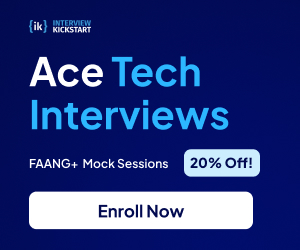From zero to cloud hero: how beginners can enter technology with cloud skills
You don't need a computer diploma to prosper in the world of technology today – just curiosity, consistency and the cloud.
If someone had told me three years ago that I would work as a Cloud Engineer, that I earn a comfortable salary and that I would consult the technological infrastructure for startups, I would have laughed – and I then asked: “What is a cloud engineer?”
At the time, I had no technological training. I worked in retail. My highest qualification was a secondary school diploma. The closest I came to “Tech” was to reset the Wi-Fi router at work or help my mother update her phone. But since many people have stayed in jobs without a future, I was hungry for change. I just didn't know where to start.
This changed when I came across an article on Cloud Computing and how it was one of the most requested skills in the technology industry. I had never heard of the AWS, Azure or Google Cloud platform. I did not know what EC2 or S3 meant. But the idea that companies moved everything to the “cloud” intrigued me. More importantly, it looked like a scale that I could really climb – if I was ready to start the first step.
Why Cloud Computing is the perfect entry point for beginners
Unlike many technological fields that require knowledge in deep coding or years of theory, Cloud Computing welcomes self -taught. It is a practical and skills -based field where certifications count as much – if not more – as traditional diplomas.
Cloud computing is essentially the backbone of modern digital infrastructure. Each application you use – whether Netflix, Spotify or the mobile application of your bank – connects the cloud to deliver content quickly, safely and worldwide. This means that companies need people who can build, manage and optimize this infrastructure. And there is a shortage of such talents.
But here is the good news: the tools are accessible. Learning paths are structured. And the demand is enormous.
My first steps in the cloud
I started with free YouTube videos explaining the basics: what the cloud is, how the services are hosted online, what “servers” mean in a virtual world. Then I discovered Aws Free Tier, which allows you to explore the Amazon Cloud platform without spending a hundred. It changed the situation. Suddenly, I was not only reading on this subject – I deployed virtual machines and built simple websites in real time.
I signed up for a course adapted to beginners on Udemy called “AWS Certified Cloud Practitioner”. No previous experience was necessary. The instructor explained everything as I was five and I loved it. After a few weeks of study, I passed the certification exam and passed. It was my first cloud diploma, and it gave me a huge confidence.
From there, I explored other areas: networking, storage, security. I tolerated in Microsoft Azure and Google Cloud to see what has each made unique. The more I went deep, the more I realized that it was not only a way of work – it was a state of mind. Cloud computing is not to memorize terms. It's about thinking in systems, solving real problems and building things that are evolving.
Hunting at work – and breakthrough
With a single certification and some practical projects (I had documented my experiences on GitHub and LinkedIn), I started to apply for roles and internships in junior cloud. I haven't heard of most. But I continued.
Finally, a recruiter sent me a message on LinkedIn. She said she liked how I explained the concepts of cloud in my messages – simple, clear and relatable. I had an interview. They asked questions about my projects. I showed them how I had set up a WordPress site on an EC2 instance, how I automated backups using lambda functions and how I built a dashboard to monitor use.
They hired me.
What you need to enter technology via the cloud
If you read this and think: “But I don't have a diploma. I am not good at mathematics. I never coded. ” – Me neither.
Here is what you need:
Curiosity: Find out how things work. Ask questions. Read the documentation.
Constitution: 30 minutes a day add up. You don't need to study the frenzy.
A state of mind of growth: you will break things. This is part of learning. Continue.
Community: join free cloud communities, discord servers, reddit forums. You are not alone.
Projects on perfection: do not expect to “know everything”. Start building. Document it.
The cloud is not the future. This is the present.
According to Gartner, more than 90% of companies today use cloud services. From health care to finance to education, everyone migrates to the cloud. This means that the control of the cloud is no longer optional – it is fundamental.
Whether you want to be a cloud engineer, a DevOps specialist, a security analyst or even a technology founder – understanding Cloud architecture gives you superpowers.
I'm not saying it's easy. But it is absolutely possible.
And if you are trying zero right now, remember: me too.
Author's note:
If you are looking for a starting point, try the game Free AWS Cloud Quest: Cloud Practitioner or the learning path of Microsoft's Azure fundamentals. And never underestimate the power of coherent small steps. Each cloud expert was once a beginner, staring at his first dashboard.




